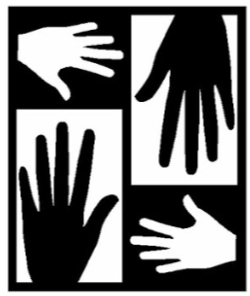Resistance to help
easing the transition into home care
Resistance to Help
Most of us accept that as we age, some of our most beloved activities may eventually fade into the past as memories. Long hikes over rocky terrain, for example, may no longer be considered safe or accessible once we are beyond a certain age. We are forced to adjust. A long mountain hike might be replaced with a daily stroll over paved suburban roads.
Adjusting our physical activity level requires a mental and emotional adjustment as well, and letting go of the abilities of our youth can sometimes cause restlessness, depression, and even a sense of failure. When physical or mental limitations are more severe, sometimes the entire family must rework its thinking about the future.
What happens from our perspective as the spouse or adult child of an older person who is no longer able to accomplish simple everyday tasks such as dressing, bathing, preparing, or even eating meals? What happens when dementia changes your loved one’s ability to care for him- or herself?
The realization that this is occurring, and that the change will likely only continue in one direction, can be terrifying. Thinking about the difficulty of simply making it through the day with the added challenge of helping another person to bathe, eat, dress, take medications, and keep the home clean can be overwhelming. But of course the resources to help families in exactly this situation are abundant, and if you are reading this article, you are well on your way to receiving the help you need. But discovering the resources can be the easiest part of the process of getting help when resistance is coming from the inside, and our loved one refuses the idea of a caregiver outside the family. Now what?
.

Not only have you built an organization based on intelligence and experience, your staff members have always been dedicated, professional and compassionate. If it weren’t for Senior Alternatives I would have had to move my mother and father a long time ago.

Not only have you built an organization based on intelligence and experience, your staff members have always been dedicated, professional and compassionate. If it weren’t for Senior Alternatives I would have had to move my mother and father a long time ago.
Engaging and Explaining
The most important aspect of this process is to involve our loved one as much as possible in the choices that are going to be made for care. If you are able to have a conversation with your relative about your plans to bring in a caregiver and you meet with resistance, talk about your understanding of the situation from his or her point of view as well as your own, and make sure to listen to his or her side.
Next, explain that you want the best for you parent or spouse and that you want to insure his or her safety, health, and comfort, but that you are unable to accomplish this alone. Explain that you worry when you are not able to be present, and that you will feel relieved to know that your loved one has everything he or she needs and is being well-cared for. Make an assurance that you will do everything in your power to make the transition as easy as possible. Of course, you may explain and assure and continue to be met with resistance. What then? Let your loved one know that this is something you can and want to do to help, and that it is what you both need.
Getting the help you need
When it comes time to find caregivers, you’ll want to give Senior Alternatives as much information about your relative as possible so that we can apply our experience to your needs. We consider the idea that your loved one and the caregiver are likely going form a long-term relationship, so we think about personality types that match, and even hobbies and interests in common, if possible. If your family member and the caregiver have something to talk about that strikes a comfortable chord, it is all the more likely that the caregiver will be accepted more readily into the daily life of the home.
Once the right match is made for your parent or spouse, it’s time to begin the process of slowly integrating the caregiver into the home. Though this might temporarily add to your level of stress by requiring more from you initially, slowly easing your relative into the caregiver’s presence, and the new routines, will pay off for everyone in the end.
For example, at first your new caregiver might come to the home close to lunchtime and help prepare a meal and join you at the table. An ordinary activity like eating lunch together, when you are also present, can help normalize the caregiver’s sudden addition to the household.
On the next visit, the caregiver might stay longer and follow a meal with a quiet activity that your parent or spouse enjoys, like playing cards, reading aloud, or watching a favorite film on television. On the following visit, you can try leaving the home for a short period of time so that your relative has a chance to slowly adjust to the idea of being alone with the caregiver when you are not present.
You know your own family member best, so it will be up to you and the rest of your family to sense how quickly to move forward with longer periods of time. If the situation is very comfortable early on, you might go ahead with what will become the caregiver’s normal routine. On the other hand, it may be very tense and uncomfortable for some time and need sensitive handling.
The final step in securing the best home care situation for you and your loved one is to remember to lean on your caregiver for support. She is there for both of you and brings years of education and experience in the door with her each time she arrives, along with an inherent understanding of your emotional condition as it relates to your loved one’s needs. And while nobody can find it easy to accept the need for help in doing simple everyday tasks that once didn’t merit a second thought, eventually your relative will become used to the caregiver’s presence and come to rely on her aid. It is important that you remember to do the same, and that despite the difficulty of making a caregiver a part of your home life, you all have the same goal: the well-being of the person you love, which is well worth a bit of a struggle.

Janet, your dedication and kindness have made you a role model for geriatric social workers in our community. Through your leadership, you have successfully created an organization that operates out of compassion for the client and family.
Senior Alternatives helped us with care for my mother-in-law when her illness progressed to the point that she couldn’t be left alone. We found their caregivers to be very high quality, caring, and dependable. The caregivers worked with my mother-in-law while she was living in our home, and I interacted with each of them quite a bit. We also appreciated Senior Alternatives’ professional procedures: the caregivers documented and communicated everything clearly. We were very happy with their services
Senior Alternatives has provided two kind, high quality caregivers that have made a huge difference to our family. Taking care of an ill relative at home can be quite difficult, and the professionalism, punctuality, caring, and flexibility of our Senior Alternatives caregivers has been first-rate. Staff are available for questions and sudden changes in plan every day of the week, and are compassionate themselves. I highly recommend their team.


Call Us Today
2530 San Pablo Avenue
Suite I
Berkeley, CA 94702
(888) 451- 4290
Follow Us
On Social Media
Visit Facebook & LinkedIn


